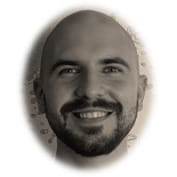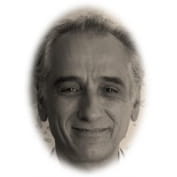The team Microbial virulence and inflammatory signaling in disease (VIRINFLAM) studies the host's immune response to the virulence of microbes. To this end, we are studying the mechanisms for detecting virulence and innate immune responses, both at the molecular and cellular level and in animal models. Our interactions with the infectious diseases and microbiology departments of the Nice University Hospital are essential to deepen our knowledge and test our hypotheses in humans by designing original clinical trials. Alongside our study of the mechanism of inflammasome activation, we have developed tools and expertise to study inflammasomes that have allowed us to advance the understanding of the biology of the NLRP3 inflammasome complex responsible for IL-1 beta maturation. This could pave the way for new targeted therapies against pathogen infections and inflammatory diseases.

Projects

L. BoyerResearch Director
Mail Laurent.BOYER@univ-cotedazur.fr
We are looking for the molecular bases that control the activation of the NLRP3 inflammasome in response to the CNF1 toxin and other virulence factors activating RhoGTPases.
Evidence of an immune response in animals directed against RhoGTPases-activating virulence factors has recently emerged. The major role of the NOD-Like Pyrine Receptor in sensing cellular changes triggered by RhoA GTPase-inhibiting toxins, indicates the involvement of NLR in sensing virulence factors (Xu et al 2014). Our work showed the critical role of caspase-1 and ASC in response to the CNF1 toxin produced by uropathogenic Escherichia coli, indicating the central role of inflammasomes in sensing the virulence potential of microbes (Diabate et al., 2015, Dufies et al, 2021).
More recently, our work has highlighted the molecular bases controlling the activation of the NLRP3 inflammasome in response to the CNF1 toxin and other virulence factors activating RhoGTPases. Our work has also highlighted the role of Pak1/2 kinases and phosphorylation of NLRP3 by Pak on T659 in IL-1beta secretion (Dufies et al., 2021; Dufies and Boyer, 2021).
We will now determine how this modification regulates the NLRP3 complex but also identify other regulators of this pathway responsible for the secretion of cytokine IL-1beta in the context of infection and in inflammatory diseases.

O. DufiesPhD student
Mail Oceane.DUFIES@univ-cotedazur.fr

C. TorrePost-doctoral fellow
Mail Cedric.TORRE@univ-cotedazur.fr

A. DoyeResearch engineer
Mail Anne.DOYE@univ-cotedazur.fr

G. MICHELResearch engineer
Mail gregory.michel@univ-cotedazur.fr

P. MunroResearcher
Mail Patrick.MUNRO@univ-cotedazur.fr

O. VisvikisResearcher
Mail Orane.VISVIKIS@univ-cotedazur.fr

L. BoyerResearch Director
Mail Laurent.BOYER@univ-cotedazur.fr

P. MunroResearcher
Mail Patrick.MUNRO@univ-cotedazur.fr
By comparing isogenic strains of Esherichia coli expressing either the wild-type form of CNF1 or the inactive catalytic mutant of CNF1, we showed that CNF1 activity is sensed by the immune system, leading to rapid elimination of bacteria during bacteremia. We also observed an increase in IL-1beta in the blood of mice infected with E. coli expressing CNF1 compared to the inactive catalytic mutant of CNF1.
We also verified that the NLRP3 inhibitor, MCC950, blocks the elimination of bacteria during bacteremia. In addition, our bacteremia results performed on NLRP3 KO mice allowed us to genetically demonstrate the importance of this inflammasome in the host response during bacteremia.
Following this observation, we used Pak1 inhibitors to block the immunity triggered by CNF1 and the elimination of bacteria during bacteremia. The aim now is to determine the immune cells involved in this phenomenon and more generally to study the involvement of the NLRP3 inflammasome in the elimination of bacteria during bacteremia and sepsis. To this end, we have set up a clinical study and a cellular test allowing us to measure the state of activation of the NLRP3 inflammasome in bacteremia patients.
When the COVID-19 outbreak started, we adapted our test. Specifically, we investigated the importance of the NLPR3 inflammasome in COVID-19 by building a patient cohort and analyzing circulating myeloid cells.
This study allowed us to highlight the involvement of non-classical monocytes and immature neutrophils in severe forms of COVID-19. Inflammasome activation is increased in nonclassical monocytes from patients with severe forms of COVID-19 because it collapses in immature neutrophils. The results obtained allowed us to develop a prognostic score with good predictive value on the outcome of COVID-19 patients (Courjon et al., 2021).

O. DufiesPhD student
Mail Oceane.DUFIES@univ-cotedazur.fr

C. TorrePost-doctoral fellow
Mail Cedric.TORRE@univ-cotedazur.fr

A. DoyeResearch engineer
Mail Anne.DOYE@univ-cotedazur.fr

G. MICHELResearch engineer
Mail gregory.michel@univ-cotedazur.fr

P. MunroResearcher
Mail Patrick.MUNRO@univ-cotedazur.fr

M. CarlesUniversity Professor - Hospital Practitioner (PU-PH)
Mail carles.m@chu-nice.fr

C. LoubatierResearch engineer
Mail Celine.LOUBATIER@univ-cotedazur.fr

V. GiordanengoUniversity Professor - Hospital Practitioner (PU-PH)
Mail Valerie.Giordanengo@unice.fr

J. CourjonUniversity Lecturer - Hospital practitioner (MCU-PH)
Mail courjon.j@chu-nice.fr

L. BoyerResearch Director
Mail Laurent.BOYER@univ-cotedazur.fr

O. VisvikisResearcher
Mail Orane.VISVIKIS@univ-cotedazur.fr
In our team, we use several experimental models ranging from invertebrate to mammalian systems to understand the molecular bases of the innate immune response during an infection. My group focuses on the importance of ubiquitination, a post-translational modification altering the stability, localization or activity of proteins in the innate immune system. In fact, ubiquitination is a reaction positively and negatively regulated by hundreds of enzymes and involved in virtually all physiological processes. Its involvement in innate immunity has been particularly well described for the regulation of the Toll/NFkB pathway. However, less is known about the role ubiquitination plays in other immune signaling pathways and in the response to infection. The nematode Caenorhabditis elegans has developed an innate immune system independent of the NFkB factor and ubiquitination appears to be an important factor in host defense against bacterial and viral infections (Garcia-Sanchez et al., 2021). Our research aims to identify and characterize conserved enzymes that modify ubiquitin and regulate innate immunity and host defense. Using RNAi-Seq analysis and fluorescent reporter-based RNAi screening, we identify regulators and effectors of the immune pathway controlling host defense in C. elegans. Using experimental mammalian systems, we aim to identify conserved immune enzymes that are also required for host defense against infection in vertebrate models.

JA. Garcia-SanchezPost-doctoral fellow
Mail juan.garcia@unice.fr

C. LoubatierResearch engineer
Mail Celine.LOUBATIER@univ-cotedazur.fr

A. DoyeResearch engineer
Mail Anne.DOYE@univ-cotedazur.fr

L. BoyerResearch Director
Mail Laurent.BOYER@univ-cotedazur.fr

C. PomaresUniversity Professor - Hospital Practitioner (PU-PH)
Mail pomares.c@chu-nice.fr

R. RuimyUniversity Professor - Hospital Practitioner (PU-PH)
Mail ruimy.r@chu-nice.fr

M. CarlesUniversity Professor - Hospital Practitioner (PU-PH)
Mail carles.m@chu-nice.fr

V. GiordanengoUniversity Professor - Hospital Practitioner (PU-PH)
Mail Valerie.Giordanengo@unice.fr
Our team includes 8 clinical doctors specialized in infectiology, parasitology, bacteriology and virology. Drawing on their expertise in human pathogens and related diseases, we develop research at the interface between fundamental research and clinical research to dissect the mechanisms of pathogenicity and detection of pathogens by the innate immune system. This work benefits from the proximity of C3M and the Archet Hospital in Nice and allows emulation between the various research projects, all centered on the study of the interaction between pathogenic microorganisms for humans and the immune system.
With the Parasitology laboratory of the Nice University Hospital, we have identified the importance of the interaction of the leishmania parasite with adipose tissue and we are currently developing tools to study the impact of this interaction on the immune system in humans ( Schwing et al., 2019; Schwing et al., 2021). We are studying this interaction in the context of leishmaniasis and asymptomatic carriage of Leishmania infantum in the context of PHRC.
With the Bacteriology laboratory, we demonstrated the emergence of the pathogenicity of strains of Bacillus cereus and Aeromonas. Using infection models (Drosophila and mouse), we determined the role of bacterial virulence and host innate immunity in this interaction (Lotte et al., 2017; Barraud et al., 2020; Ben Khedher et al., 2021). Work on B. cereus has made it possible to highlight the emergence of B. cereus infections in premature newborns. We are continuing this study with a national recruitment of bacterial strains and a transversal project in collaboration with INRAE and ANSES to determine the origin of this emergence, the role of virulence factors and the innate immune response.

G. MICHELResearch engineer
Mail gregory.michel@univ-cotedazur.fr

C. LoubatierResearch engineer
Mail Celine.LOUBATIER@univ-cotedazur.fr

L. SimonPhD student
Mail Loic.SIMON@univ-cotedazur.fr

B. LamyUniversity Lecturer - Hospital practitioner (MCU-PH)
Mail lamy.b@chu-nice.fr

P. MartyUniversity Professor - Hospital Practitioner (PU-PH)
Mail marty.p@chu-nice.fr

R. LotteUniversity Lecturer - Hospital practitioner (MCU-PH)
Mail lotte.r@chu-nice.fr

A. RobertPhD student
Mail robert.a@chu-nice.fr

A. ChevalierPhD student
Mail chevalier.a3@chu-nice.fr
Publications
Focus
Escherichia coli Rho GTPase-activating toxin CNF1 mediates NLRP3 inflammasome activation via p21-activated kinases-1/2 during bacteraemia in mice.Authors Dufies O, Doye A, Courjon J, Torre C, Michel G, Loubatier C, Jacquel A, Chaintreuil P, Majoor A, Guinamard RR, Gallerand A, Saavedra PHV, Verhoeyen E, Rey A, Marchetti S, Ruimy R, Czerucka D, Lamkanfi M, Py BF, Munro P, Visvikis O, Boyer L
Nature microbiology Mar 2021
Heterogeneous NLRP3 inflammasome signature in circulating myeloid cells as a biomarker of COVID-19 severity.Authors Courjon J, Dufies O, Robert A, Bailly L, Torre C, Chirio D, Contenti J, Vitale S, Loubatier C, Doye A, Pomares-Estran C, Gonfrier G, Lotte R, Munro P, Visvikis O, Dellamonica J, Giordanengo V, Carles M, Yvan-Charvet L, Ivanov S, Auberger P, Jacquel A, Boyer L
Blood advances Mar 2021
Other recent publications
RAC2 gain-of-function variants causing inborn error of immunity drive NLRP3 inflammasome activation.Authors Doye A, Chaintreuil P, Lagresle-Peyrou C, Batistic L, Marion V, Munro P, Loubatier C, Chirara R, Sorel N, Bessot B, Bronnec P, Contenti J, Courjon J, Giordanengo V, Jacquel A, Barbry P, Couralet M, Aladjidi N, Fischer A, Cavazzana M, Mallebranche C, Visvikis O, Kracker S, Moshous D, Verhoeyen E, Boyer L
The Journal of experimental medicine Aug 2024
Risk of subsequent primary oral cancer in a cohort of 69,460 5-year survivors of childhood and adolescent cancer in Europe: the PanCareSurFup study.Authors Sunguc C, Hawkins MM, Winter DL, Dudley IM, Heymer EJ, Teepen JC, Allodji RS, Belle FN, Bagnasco F, Byrne J, Bárdi E, Ronckers CM, Haddy N, Gudmundsdottir T, Garwicz S, Jankovic M, van der Pal HJH, Mazić MČ, Schindera C, Grabow D, Maule MM, Kaatsch P, Kaiser M, Fresneau B, Michel G, Skinner R, Wiebe T, Sacerdote C, Jakab Z, Gunnes MW, Terenziani M, Winther JF, Lähteenmäki PM, Zaletel LZ, Kuehni CE, Kremer LC, Haupt R, de Vathaire F, Hjorth L, Reulen RC
British journal of cancer Nov 2022
Optineurin links Hace1-dependent Rac ubiquitylation to integrin-mediated mechanotransduction to control bacterial invasion and cell division.Authors Petracchini S, Hamaoui D, Doye A, Asnacios A, Fage F, Vitiello E, Balland M, Janel S, Lafont F, Gupta M, Ladoux B, Gilleron J, Maia TM, Impens F, Gagnoux-Palacios L, Daugaard M, Sorensen PH, Lemichez E, Mettouchi A
Nature communications Oct 2022
Show all publicationsPatents
Co-inventors O. Dufies, P. Chaintreuil, J. Courjon, A. Jacquel, P. Auberger, L. Boyer
Co-inventors L. Boyer, J. Courjon


